Kalanchoe is from the diverse Crassulaceae Family, which includes popular succulents like the Jade Plant ( a Crassula ) , which is considered by the Chinese to be a good luck charm if you have a plant outside your front door entrance. While the Jade plant is a very tough and attractive plant, it is not as spectacular as the Kalanchoes, which boasts many colourful flowering varieties, sometimes called by their common name 'Widows Thrill".
Succulents are drought tolerant because they hold water within their fleshy leaves, and many plants continue to thrive even though they are neglected. In fact, don't water them too much or you will kill them because the roots will rot off. They are happiest in desert-like conditions- hot and dry. This Kalanchoe plant was in a local garden in Sydney, where it was surrounded by weeds, and next to a dusty building site, but it is still happily flowering away.
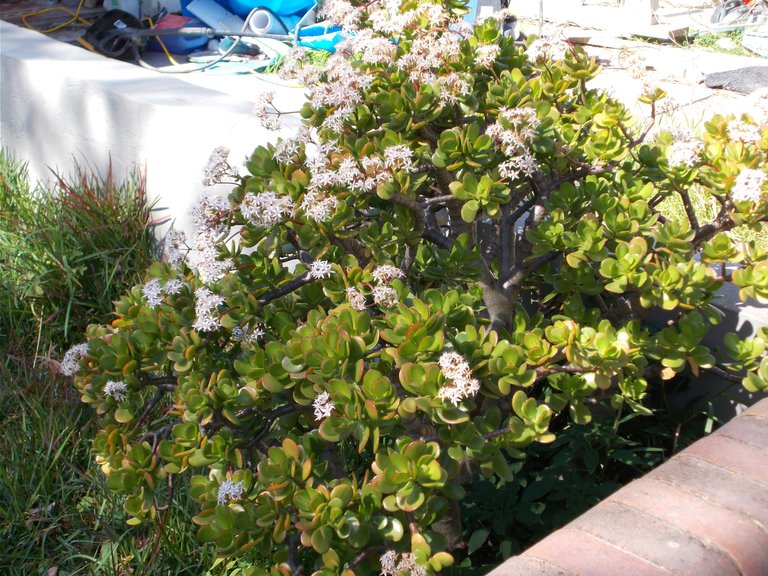
Hi, firstly thanks for introducing a new flower. I want to share some information about kalanchoe.
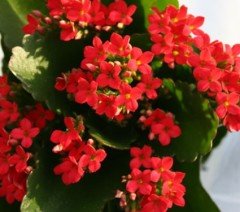
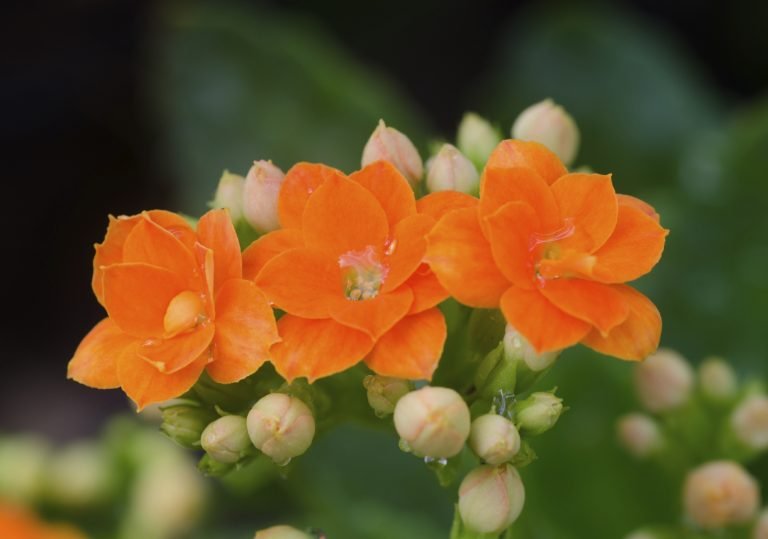
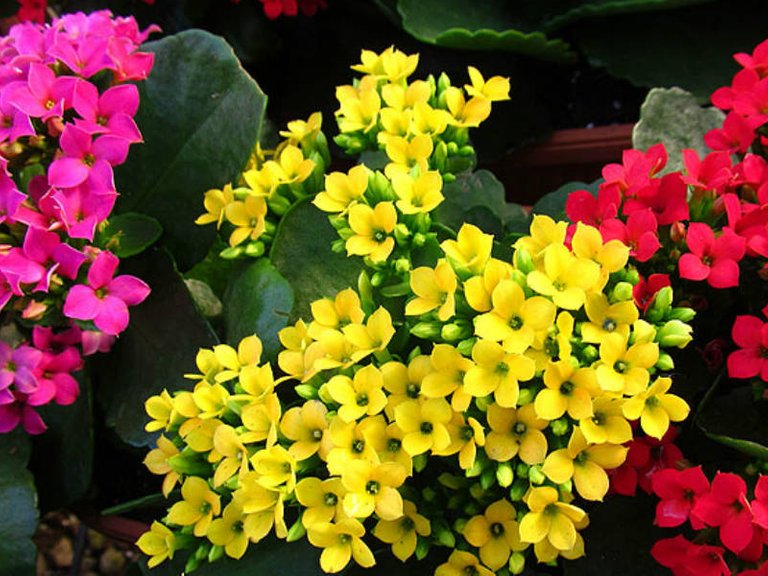
Kalanchoe flower is a beautiful and colorful flower that colors living spaces such as houses, offices and work places. Kalanchoe flower has many kinds and colors in nature. His development is slow and he does not grow too long.
Kalanchoe flower should not be exposed to direct sunlight. It may tend toward the direction of daylight. The direction that does not receive daylight should be turned to daylight at certain intervals. Thus the tendency of the flower to one direction may be prevented.When the leaves are light, they can not be fed as much as they can, and for this flower comes fading and darkening.
Kalanchoe flower should be watered from the top at least twice a week in summer and once a week in winter. The water needs to reach all the soil. Mondays and Thursdays may be preferred in summer irrigation techniques. In winter, Monday days may be preferred for irrigation techniques. The water scale used during irrigation must be the same and water should be poured out in the morning in the morning if the water is poured in the water most of the time in the pot. This will prevent the formation of odor and pests in the soil of the plant. The basic rule in the plant is that the soil of the plant is dry and must be watered, so we can understand that it is dry or wet by sinking the fingers into the soil. If it is wet, we have to leave the irrigation water on the next watering day because the plant has not finished the water in the ground yet.
After the flowers on the leaves of the kalanchio flower have faded away, the foliage should be cut off to prevent the flow of air into the pruned and interrupted region, so that the plant will bloom again. Example: cold silicone can be sealed with non-caustic adhesives on wax.
Thank you for reading..
Silly Sausage award ! I have never heard of using cold silicone , i'm not sure that i understand this. Maybe it's because of the problem with English. I don't really care, but you made me LOL ! And why would you cut the foliage off ?? WTF !! Don't use your breast implants to get more silicone. I like the pics too. Well done !!
Kalanchoe plants are thick leaved succulents that are often seen in florist shops or garden centers. Most end up as potted plants but areas that can mimic their native land of Madagascar can grow them outdoors. The clusters of tiny flowers produce a large bloom held aloft on stems above the majority of the foliage. If you wish a second bloom, it is incumbent to know how to take care of a kalanchoe. These plants need short winter light periods to form new buds. Learn how to grow kalanchoe and the perennial can reward you with several seasons of the bright colorful flowers.
About Kalanchoe Plants
The deep green, scalloped leaves of the kalanchoe are just as attractive as the flowers. The sculpted foliage persists after bloom and provides for a handsome plant. The starry flowers are long lasting and bloom in winter to spring. Kalanchoe plants require well-drained soil and mild temperatures of at least 60 F. (16 C.). Little maintenance is necessary for kalanchoe care and the succulent has few disease or pest problems, especially when grown indoors.
How to Grow Kalanchoe Cuttings
Kalanchoe plants are fun to grow from cuttings. The vegetative stems produce the best plants and root quickest. Take a 2- to 3-inch section and strip off the bottom couple of leaves. Let the cutting sit out in a warm, dry location to form a callus on the end. Plant the cutting in pre-moistened peat and perlite up to the first leaf. Enclose the entire pot in plastic to form a little terrarium and conserve the moisture. Place the pot in a bright window with indirect light. Cuttings will root in 14 to 21 days and are then ready to transplant.
How to Take Care of a Kalanchoe
Plants may grow well in southern Florida year round or outside in USDA zones 8 to 10 during the summer months. Kalanchoe care is minimal but be cautious about light levels. Strong southern light can burn the tips of the leaves. Place pots in partial sun to light shade areas when growing kalachoe plants. The best planting mix is 60 percent peat moss and 40 percent perlite. Cut off spent flower stems and pinch back leggy growth to force a compact plant. Water the plant deeply and then allow it to dry out completely before you give it further moisture. Fertilize once per month during the growing season with a houseplant food.
Kalanchoe plants are thick leaved succulents that are regularly found in flower vendor shops or garden focuses. Most wind up as pruned plants yet zones that can impersonate their local place where there is Madagascar can develop them outside. The bunches of modest blossoms create a substantial sprout held up high on stems over most of the foliage. On the off chance that you wish a moment sprout, it is occupant to know how to deal with a kalanchoe. These plants require short winter light periods to shape new buds. Figure out how to develop kalanchoe and the lasting can remunerate you with a few periods of the brilliant beautiful blooms.
The dark green, scalloped leaves of the kalanchoe are similarly as alluring as the blossoms. The etched foliage continues after sprout and accommodates a great looking plant. The starry blossoms are dependable and sprout in winter to spring. Kalanchoe plants require very much depleted soil and gentle temperatures of no less than 60 F. (16 C.). Little upkeep is fundamental for kalanchoe mind and the succulent has few sickness or bug issues, particularly when developed inside.
How to Grow Kalanchoe Cuttings
Kalanchoe plants are amusing to develop from cuttings. The vegetative stems create the best plants and root snappiest. Take a 2-to 3-inch segment and strip off the base couple of clears out. Give the slicing a chance to sit out in a warm, dry area to shape a callus on the end. Plant the cutting in pre-soaked peat and perlite up to the primary leaf. Encase the whole pot in plastic to shape a little terrarium and monitor the dampness. Place the pot in a splendid window with circuitous light. Cuttings will establish in 14 to 21 days and are then prepared to transplant.

How To Grow Kalanchoe Plants
Plants may develop well in southern Florida year round or outside in USDA zones 8 to 10 amid the late spring months. Kalanchoe mind is negligible yet be wary about light levels. Solid southern light can consume the tips of the clears out. Place pots in incomplete sun to light shade territories when developing kalachoe plants. The best planting blend is 60 percent peat greenery and 40 percent perlite. Cut off spent bloom stems and squeeze back leggy development to drive a reduced plant. Water the plant profoundly and after that enable it to dry out totally before you give it facilitate dampness. Prepare once every month amid the developing season with a houseplant nourishment.

Kalanchoe Care for Second Bloom
Despite the fact that the plant foliage of developing kalanchoe succulent plants is fascinating even without sprouts, the blossoms make the most astounding presentation. To constrain the plant to blossom once more, you should trick it into trusting it has encountered winter. Amid October and early March, the day lengths are sufficiently short to normally constrain bloom buds. In different periods, you should put the plant in a wardrobe or diminish space for the greater part of the day. Bring it out just to morning light and after that put it away following a couple of hours. The plant needs a month and a half of 12 to 14 hour obscurity to shape terrific new blooms. The best temperatures for arrangement of blossoms are 40-45 F. (4-7 C.) around evening time and 60 F. (16 C.) amid the day. Kalanchoe administer to plants that have started to shape buds is the same as that for blooming plants.

Hope like my stuff whereas you are already reward me on 1st position of your last blogs but this time i am late due busy in my job activity on last date on monthly closing.
stay blessed and steem on
Thanks for appreciation
Wonderful flower post...
Kalanchoe also written Kalanchöe or Kalanchoë, is a genus of about 125 species of tropical, succulent flowering plants in the family Crassulaceae, mainly native to Madagascar and tropical Africa.
Most are shrubs or perennial herbaceous plants, but a few are annual or biennial. The largest, Kalanchoe beharensis from Madagascar, can reach 6 m (20 ft) tall, but most species are less than 1 m (3 ft) tall.
Kalanchoes are characterized by opening their flowers by growing new cells on the inner surface of the petals to force them outwards, and on the outside of the petals to close them. Kalanchoe flowers are divided into 4 sections with 8 stamens. The petals are fused into a tube, in a similar way to some related genera such as Cotyledon.
The genus was first described by the botanist Michel Adanson in 1763. Adanson cited Camellus as his source for the name. the name came from the Chinese name "Kalanchauhuy".
Kamel's species was most likely Kalanchoe ceratophylla as he describes the plant as having deeply divided leaves.[citation needed] Kalanchoe ceratophylla is called 伽蓝菜 (apparently 'Buddhist temple herb') in China, not very close in pronunciation: qiélán cài or jia lan cai depending on the romanisation (but the Cantonese 'gaa laam choi' may be closer).[citation needed] The genus Bryophyllum was described by Salisbury in 1806 and the genus Kitchingia was created by Baker in 1881. Kitchingia is now regarded as a synonym for Kalanchoe, whereas some botanists treat Bryophyllum as a separate genus.

In common with other Crassulaceae (such as the genera Tylecodon, Cotyledon and Adromischus), some Kalanchoe species contain bufadienolide cardiac glycosides which can cause cardiac poisoning, particularly in grazing animals. This is a particular problem in the native range of many Kalanchoe species in the Karoo region of South Africa, where the resulting animal disease is known as krimpsiekte (shrinking disease) or as cotyledonosis. Similar poisonings have also occurred in Australia.
In traditional medicine, Kalanchoe species have been used to treat ailments such as infections, rheumatism and inflammation. Kalanchoe extracts also have immunosuppressive effects. Kalanchoe pinnata has been recorded in Trinidad and Tobago as being used as a traditional treatment for hypertension.
A variety of bufadienolide compounds have been isolated from various Kalanchoe species. Five different bufadienolides have been isolated from Kalanchoe daigremontiana. Two of these, daigremontianin and bersaldegenin 1,3,5-orthoacetate, have been shown to have a pronounced sedative effect. They also have the strong positive inotropic effect associated with cardiac glycosides, and with greater doses an increasing effect on the central nervous system.
Bufadienolide compounds isolated from Kalanchoe pinnata include bryophillin A which showed strong anti-tumor promoting activity, and bersaldegenin-3-acetate and bryophillin C which were less active. Bryophillin C also showed insecticidal properties....
Hi @ctrl-alt-nwo. I did not see you a long time. I am happy to see you here. Nice to see you..
If you are looking for a potted flower with small, colorful flowers, easy to maintain and a small footprint, we recommend that you use your preference for Kalanchoe. Let's examine this flower together and learn the fineness of care together.
Kalanchoe flower is known as Turkish name 'Kalanşo'. It is a tropical plant of the Crassulaceae family, of African and Asian origin. Let's take these sukulent ones here. The largest type of remnant is found in Madagascar. As we have already mentioned, the care and reproduction of the sukulent is quite easy. For this reason it is often preferred to look at home sukulent species. The rest of the flowers are also the most popular flowers with this flower. With its plump and bright leaves, we can call it a flamboyant home and office flower. Kalanşo, which is a cluster of flowers in bundles, has many colors in the nature. Flower colors can be red, yellow, white, orange or pink.
The meaning of kalanchoe is falling and green. The branches and leaves that break as a general feature of the succulent species are regenerated from the ground. The name is also taken from this feature.
He loves bright and airy spaces, and he does not like to be exposed to direct sunlight. He does not like water too much. He can bloom from the beginning of autumn to the beginning of summer.
How is the care of the residents?
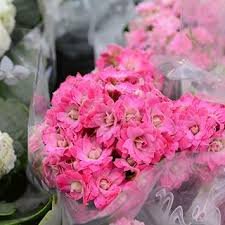

Kalanşşo care is extremely simple. By doing basic care, you can live for many years. The remaining person, who is looked at by watering in a suitable environment, can manage himself. In addition, if you care for the soil and attach a little more importance to the comfort of your plant, it may be a survival tree with quite abundant flowers.
Dont stay away so much. We are learning lots of information thanks to you . See you soon !
My photos from the Google.. Thank for reading @ctrl-alt-nwo
Extremely Amazing Facts About Kalanchoe Plants...
Kalanchoes are succulents that are very popular as houseplants...
Kalanchoe plants belong to the family Crassulaceae and genus Kalanchoe that consists of around 125 species. These tropical flowering plants are natives to Madagascar, but a few species are found in Brazil and some parts of Asia. Most of these plants grow to a height of around one meter. However, some species grow like trees, with a height of about six meters. The name 'Kalanchoe' is believed to be Chinese in origin. These plants are very popular as ornamental houseplants, due to low maintenance, colorful flowers, and low water requirements....
Even though the appearance of individual kalanchoe species may vary, in general, these plants have some common features. Most kalanchoe plants have large, thick, and succulent leaves, and numerous stems. These plants develop brilliantly colored flowers, that are produced in terminal clusters. There are many varieties that produce flowers in different colors. The most common among them are red, pink, yellow, orange and white. These plants bloom during late fall and last till late winter. Some of them may produce flowers throughout the year. A characteristic feature of kalanchoes is the growth of new cells on the inner sides of the petals, so as to force open the flowers. Such cells are also found on the outer surfaces of the petals, to aid closure of the flowers.
Kalanchoe blossfeldiana is the most popular and commonly found houseplant among the kalanchoe species. Other popular species include Kalanchoe manginii, Kalanchoe beharensis, Kalanchoe pinnata and Kalanchoe porphyrocalyx. Kalanchoe plant propagation may vary with the species. While some species are propagated through stem cuttings, others develop plantlets along the leaf margins. In some other species, offsets that develop from the mother plant are used...
How to Care for Kalanchoe Plants...
As mentioned above, these plants require very less maintenance, and this is one of the reasons for their growing popularity. They need well-drained soil and bright light for a healthy growth. Kalanchoes may not withstand long exposure to cold conditions. If you want to grow them in pots, use clay pots with good drainage. They need water for survival, but over watering may harm the plants. So, water kalanchoes, only when the soil gets dry. Use a houseplant fertilizer in very small amounts, during the growing season, i.e, from March through October. During hot climates, avoid direct sunlight, which can be harmful for these plants. Pruning involves removal of dead leaves and flowers. This encourages new growths. Compared to those planted outdoors, pest attacks and diseases are rare in indoor kalanchoes. If they develop such problems, try to use non-toxic insecticides, because chemicals can cause harm to these plants.
However, some species of kalanchoes are said to be toxic for cats. If you have cats in your house, you can prevent them from chewing kalanchoe leaves by sprinkling cayenne pepper over the plant. The severity of toxicity depends on the amount of leaves ingested. So, if you are interested in growing kalanchoes, get some from the nearest local nursery, and enjoy their vibrant blooms....
@ctrl-alt-nwo sir Thanks for sharing this amazing post...
Kalanchoes are not particularly hard to grow, and the flowering varieties are highly rewarding for their colorful and long-lasting flowers. They prefer bright, sunny locations, especially in the summer growing season. During the winter, consider a south-facing window. Water moderately throughout the summer and reduce watering in the winter. Let the soil surface dry out between waterings, and in the winter, the plant can almost dry out. Watch the fleshy leaves for signs of water distress. They prefer warmth. Do not let fall below 55ºF (12.7ºC). An ordinary potting soil mix is fine. Feed bi-weekly in the summer with a liquid fertilizer, or use slow-release pellets.
Many kinds of Kalanchoe will produce tiny plantlets along the leaf margins that can be individually potted up.
100%like and resteemThanks for the information of Succulent Kalanchoe plant.@ctrl-alt-nwo
Extremely awesome information shared and nice image provided @ctrl-alt-nwo. This is a multi coloriong flowers entire plants. Kalanchoe is popular with gardeners for a variety of reasons. House plant growers enjoy having it in their collections for the long-lasting bloom heads that appear in the cold of winter. Those in warmer climates appreciate its drought-tolerance, making it great in rock gardens and xeriscaping. Due to its extreme cold sensitivity, kalanchoe is best-suited as a houseplant in most climates, and has become a very popular one. Growing kalanchoe indoors is fairly simple, since the temperature range it requires (60 – 85 degrees F) is basically the same as most people. It needs well-draining soil; over-watering or letting it sit in wet soil can cause root rot. The plants are usually sold in the winter or early spring, while in their natural bloom cycle. The flowers are long-lasting, but once they fade, you can trim the heads to better enjoy the succulent foliage. Lots of bright sunlight will keep this plant healthy throughout the summer months, whether it’s growing indoors or out.
Suddenly I want to look at the flower I want to bring to the house I take the flower from the flowers I bring home. I set the place on the ball, I gave the water, and then I checked to see how big it was by the hour. Come on in the second evening in our house, our cruel dog was seriously wounded by a treacherous attack by foam. the criminal has picked up the aggressive potion one time in the mouth and one while running like mad in the garden we need to hand the lamb la la where this flower is crazy like mad. When we reached the victim, they would have a hole in the teeth and a miserable state. immediately intervened in the wounded and left to rest in the new pot. you need your prayers for the healing of the day, though you regain your self, do not miss a prayer. I hoped to open the red flowers as soon as possible.
And it's a really great survival drive. Despite the dog.
(Kalanchoe blossfeldiana) is a succulent plant, so some people call it the name of the cactus (Culacho cactus), flowering and long-lived flowers, and take several colors of red, yellow, orange and purple, and this plant includes several species more than 100 species, It blooms only during spring, but blooms throughout the year, and most of them are sold from hybrid plants whose growth is close to one another and can be up to 30 cm.

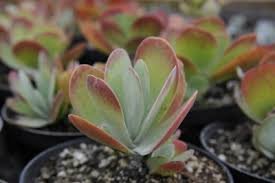.jpeg)
Take care of it
The plant should withstand relatively dry air. The temperature should not be less than 10 ° C. It is bright for direct sunlight except for the summer period. It is abundantly sung during the year except winter and reduces irrigation. It is regularly fed at least every two months except winter. If you want to transfer it to another pot, the transfer is done after the flowering period. It is preferable to trim the branches from all sides to get a growing plant in the next season. It is easy to grow and cheap. Many farmers treat it as a plant and replace it with another.
After about 6 to 8 weeks, buds should start to re-appear on your kalanchoe. At this point it will be ready to put back out on display in a bright location for you to enjoy. Continue to care for your plant as you did the previous year and you should enjoy long-lasting blooms throughout the festive period. I appreciate all your gardening post. Peoples more information provided I saw. Brilliant succeed work and keep going.@ctrl-alt-nwo, That's real beautiful color indeed speedy growth up plant introduction. Nice explained every time. Kalanchoe is a popular thanks to the colourful blooms which start to appear in December and last around 6 to 8 weeks. Native to Madagascar, it's a succulent plant that can survive in dry environments with little humidity. This also makes kalanchoes incredibly easy to care for – another reason people love them. Available in single and double flowering varieties, they have beautiful dark green waxy leaves and tiny tubular flowers, perfect for brightening up your home. Red is of course is most people's top choice at Christmas but this beautiful plant also come in white, pink, fuchsia, yellow and orange.From around mid-September onwards, stop feeding your plant and give it 14 hours of complete darkness per day. A good way is to place it in a cupboard overnight from around 6pm to 8am. Make sure that the cupboard you choose won't be disturbed during the night, because even small amounts of artificial light can prevent this process from working. During the day it should be placed in a cool but bright location (10-15°C).
Kalanchoe plants sense the shorter days of winter and provide your garden with clustered white to pink blooms in both winter and spring. Although these succulents can be propagated by seed in both indoor containers and outdoor gardens, growing new kalanchoe plants from leaves is much simpler and less time-consuming.
Choosing the best cutting from your kalanchoe in the late spring or early summer enables you to have a better chance at a successful new plant. As you evaluate your kalanchoe, select a 2-inch-long stem that has at least two leaves attached to it. It is good practice to avoid any flowering stems, so that the cutting concentrates on growth rather than reproduction. After removing the stem, you need to place this cutting in a dry area, such as on a gardening bench.
I like it's leaf! It looks like plastic type! Amazing photography and information about it!@ctrl-alt-nwo,
Cheers~
Your photography is really good.
 Thanks for sharing dear @ctrl-alt-nwo
Thanks for sharing dear @ctrl-alt-nwo
Surprise someone special with a tropical treat for the senses. Our expert florists have hand-selected gorgeous blooming kalanchoe plants and placed them in classic woven baskets, ready to add the plant's symbolic lasting affection to birthdays, housewarmings and expressions of friendship. Fresh kalanchoe plant arrives beautiful and blooming with either orange, yellow or pink blossom.
Planter measures 6"H. Measures overall approximately 6"D. Our florists hand-pick each plant, so bloom color and container may vary due to local availability.
#source:google #Full link:https://www.1800flowers4giftseattle.com/1-800-flowers-6-kalanchoe-plant/99199/
kalanchoe
Cultivation and uses;
These plants are cultivated as ornamental houseplants and rock or succulent garden plants. This plant is known to the Chinese as "10,000 purple 1,000 red" and is commonly purchased during the Lunar Calendar New Year for decorative purposes.[citation needed] They are popular because of their ease of propagation, low water requirements, and wide variety of flower colors typically borne in clusters well above the phylloclades. The section Bryophyllum—formerly an independent genus—contains species such as the "air-plant" Kalanchoe pinnata. In these plants, new individuals develop vegetatively as plantlets, also known as bulbils or gemmae, at indentations in phylloclade margins. These young plants eventually drop off and take root. No males have been found of one species of this genus which does flower and produce seeds, and it is commonly called, the Mother of Thousands; the Kalanchoe daigremontiana is thus an example of asexual reproduction.These plants are the food plant of the caterpillars of Red Pierrot butterfly. The butterfly lays its eggs on phylloclades, and after hatching, caterpillars burrow into phylloclades and eat their inside cells
Very interesting and dainty flowers! I hardly see Kalanchoe anywhere here! I wonder why since it is very suitable for our kind of hot and dry climate!
You must have been very busy too!
I think you have visited almost all the houses with front gardens in Sydney!! Next, you’ll have to travel further for your plant collection!
Thanks for such wonderful articles on plants which I can always refer to at any time!!
Cheers.
In your Country, there may be too much rain , so to grow these, you need to have preferably sandy or rocky soil that is well drained and does not hold too much water, otherwise they will get root rot and die. I have a busy life , so i try to keep the photo-taking easy and local, we have many great local gardens that i can exploit. Sooner or later, i am going to have to find some plants further away, you are right.
Thank you very much for your reply. Actually, I look at these photos in your post, I just realize that I could see these plants sold as small pot plants! People here don’t plant them in soil, they are pot pants for decoration. I am going to get some at the plants fair in March.
Keep well and don’t work too hard!
Cheers.
This is beautiful. do you like it?

source
souce
source
I hope you will like them.
Very nice pics, thanks.
@ @ctrl-alt-nwo
My mother from this flower has been around for years and is very durable. That's why I like it very much. It's becoming green. It's a tree view but I'm very surprised that it can reach 2 meters. Our parents were very big, but only about 50 cm.

I guess it s not really taken care of, and it sheds all the leaves in between. And then it gets green again. I have much more information thanks to your sharing about this flower. Thank you very much for your sharing. I enjoy it with pleasure. And I want to see you more often.
Well-flowered flowers are just as powerful as they are rare.
F.W. Nietzsche
Wow really nice photography also flower. ..i think im 1st time seen this flower but its really nice...
Thanks a lot for sharing with us ur lovely post @ctrl-alt-nwo upvote done
Kalanchoe we have a very common flower, it is considered curative. And I have successfully treated my children with a runny nose. Thank you for the wonderful post.
Have a look at these.
Kalanchoe plants are thick leaved succulents that are often seen in florist shops or garden centres. Most end up as potted plants but areas that can mimic their native land of Madagascar can grow them outdoors.
Source
source
source
source
aren't they beautiful?
Yes, very nice Bougainvilleas !
I'm glad to see your love for Flowers.
wow Wow really nice photography also flower. ..i think im 1st time seen this flower but its really nice...
Thanks a lot for sharing with us ur lovely post @ctrl-alt-nwo upvote done
beautiful flowers buddy photography is very nice and the result is very satisfactory
post a very nice buddy very interesting flower
Good photography sir awesome post.thankful buddy
I have a flower at home, we call it a "money tree." According to the legend, it is believed that it brings profit to the house. Thank you for the interesting post. Good work @ctrl-alt-nwo
so beautiful , Kalanchoe

I take a resteem
Looks really fresh and amazing so nice to see :)
Amazing and looks so lavishing at the same time a very rare plant as i have not seen it anywhere
@ctrl- alt - nwo..wow really a very nice photography..looking awesome .. the flowers looking soo beautiful..thank you for sharing with us..
Wow I follow you and i seen that you are a Good photographer.
Your all photography are really awesome.
Thanks for sharing dear.
100% upvote and resteem done for your post.
Nice and beautiful plant to grow along looking so elegant and charming so nice :)
This is beautifully impressive i am loving these shots so nice to see this plant and know about it :)
a good luck symbol which is present all the time this is very cool to see
watched the shot in full screen the flower on this plant is very incredible one's i don't think i will found it out nearby me but thanks for sharing bro
This is great article and wonderful photography.
Upvote Resteem 👌 @ctrl-alt-nwo
Simply so beautiful nature is truly full of wonders to admire thanks for showing it :)
Was looking at your blog today got to see this after a little break nice find in plants they have unique shape and flowers
Quite superb flower on that thing i have never seen this it is beautiful
Your flowers photography is really excellent.
Thanks for sharing with us dear.
upvote and resteem done
I really like flowers.
And white flowers is really awesome.
lot of Thank @ctrl-alt-nwo for sharing